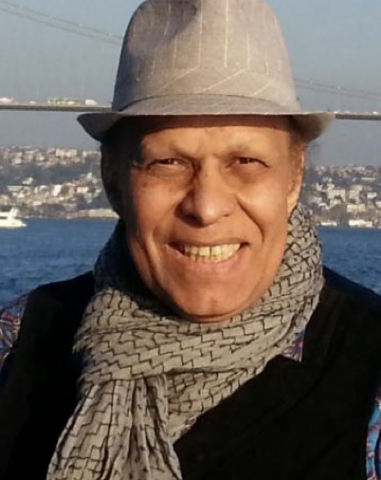Presenters: The Brain
 Beauty from Chaos — Obsessive Compulsive Disorder and the Creative Process
Beauty from Chaos — Obsessive Compulsive Disorder and the Creative Process
Jamie Baldridge, BFA, MFA.
Associate Professor
Bella Nickerson Chappius Abramson/BoRSF Endowed Professorship in Cinematic Arts
Department of Visual Arts
College of the Arts
baldridge@louisiana.edu
After nearly four decades of living with Obsessive Compulsive Disorder, I have concluded that it is a necessary part of my creative artistic process. Over time, I have developed strategies to co-opt what are often seen as the deleterious symptoms of OCD in a manner which moves my work and research forward and enriches my life.
Magdy Bayoumi, Ph.D.
Department Head & Professor
W. Hansen Hall Memorial BoRSF Chair in Telecommunications
W. Hansen Hall Memorial BoRSF Chair in Computer Engineering
IEEE Fellow
Department of Electrical & Computer Engineering
College of Engineering
Mab0778@louisiana.edu
One of the main ultimate goals of the "Brain Initiative" is to be able to control our surrounding world by the power of our mind, to control the artificial limbs by our thoughts and to read people's brains. It is a dream and it is an exciting one. Brain Computer/Machine Interface (BCI/BMI) is one of the enabling technologies towards these goals. We have designed and developed BCI chips that can overcome the main challenges of interfacing with the human brain, mainly low bandwidth communication, small chip area, low power and low heat dissipation, and tolerance to noise. This new chip is based on spike sorting. A case study of early prediction, warning, and detection of epileptic seizure using the developed chip will be illustrated.
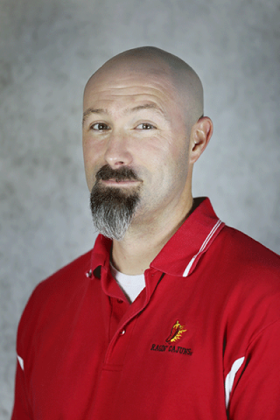 Aging, Endocrine Markers, Fitness and Cognitive Function
Aging, Endocrine Markers, Fitness and Cognitive Function
David Bellar, Ph.D.
Director/Professor
Patrick Rutherford/BoRSF Endowed Professorship in Education
School of Kinesiology
College of Education
dbellar@louisiana.edu
By the year 2050 it is estimated the number of the US citizens over the age of 65 will double to over 80 million (roughly 20% of the population). It is well known that both mental and physical declines are noted with advanced age, and thus with the shifting demographics in the population it is more important than ever to embark on research in this area. With this in mind, the talk will focus on data from recent studies that have examined biomarkers and fitness alongside aging and cognitive function. The data presented will focus on endocrine markers known to be altered by exercise and fitness levels, and will examine association with working memory and executive function.
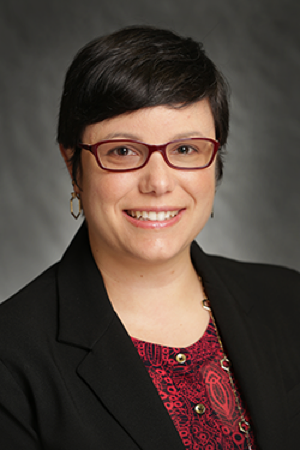 Language and Embodied Cognition
Language and Embodied Cognition
Brooke O. Breaux, Ph.D.
Assistant Professor
Department of Psychology
College of Liberal Arts
brookebreaux@louisiana.edu
Previous research has shown that processing of language--especially language that implies a particular location or direction--can influence motor action. Research has also shown that motor action can interact with emotion. For example, Casasanto and Dijkstra have shown that retrieval of emotional autobiographical memories can be influenced by something as simple as moving marbles from a lower position to a higher position. Very generally, these researchers found that “positive emotions are implicitly associated with upward movements and negative emotions with downward movements.” Members of my Cognitive and Psycholinguistics (CaP) Research Lab are currently expanding upon this research by investigating (a) under what circumstances the valence (i.e., positive or negative) or implied direction (i.e., up or down) of a statement will either speed up or slow down people's motor movements and (b) under what circumstances engaging in particular motor movements (i.e., up or down) will either improve or diminish people's ability to remember these statements.
 Talent Development and the Achievement Gap: Frontloading to Spark Young Minds
Talent Development and the Achievement Gap: Frontloading to Spark Young Minds
Christine Briggs, Ph.D.
Associate Professor
Director, Center for Gifted Education
Department of Curriculum & Instruction
College of Education
cbriggs@louisiana.edu
This brief presentation will provide an overview of the under-representation of students of diversity and poverty in advanced academic/gifted program offerings in schools. The field of education has wrestled with this issue of under-representation for decades but it still remains. An alternative to address this disparity is to frontload; provide early learning experiences to expose young children to the key ideas in different disciplines. This will spark students’ interest, develop talent potential in students of diversity and guide them to greater achievement and success.
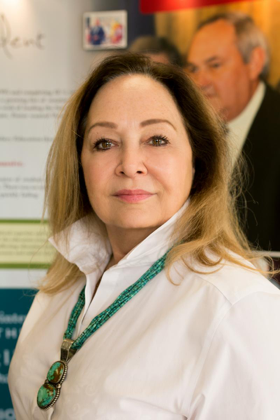 Digital Books for Young Children: A New Essential in Literacy Education Control Theory
Digital Books for Young Children: A New Essential in Literacy Education Control Theory
Karen Burstein, Ph.D.
Executive Director, Cecil J. Picard Center for Child Development & Lifelong Learning
Professor & Loyd J. Rockhold Endowed Chair of Early Childhood
Department of Communicative Disorders
College of Liberal Arts
karen.burstein@louisiana.edu
Reading is a learned behavior, unique to the human brain, by which we actively teach ourselves, transmit our culture, and dramatically increase our native capabilities. However, there are limited pathways by which our brains conduct this process. Reading acquisition, which begins in early childhood, is a major step in child development, during which as many as 40% of children struggle, ultimately, leaving approximately one in two adults (U.S., 36 million) unable to comprehend minimal text.
Early shared storybook reading, considered the starting-point for developing narrative comprehension, occupies a central role in early literacy and is a vital component of learning to read and reading. Today, with the proliferation of technology, families are turning to digital books as potential alternatives or augmentation to traditional storybook reading. Thus, there is an urgent need for theory-driven research on digital storytelling techniques to identify optimal design elements and for whom high quality digital books can influence skills to the same extent or even surpass than regular book reading.
A series of studies under way will: (a) build a set of digital books that include digital storytelling techniques reflective of information processing and multi-media learning theories; (b) define and test evidence-based digital storytelling techniques that inform the design of quality digital books for young children; and (c) test effects of optimally designed digital books with digital storytelling techniques on the language and listening comprehension skills of children ages 4-6.
 The Role of Compensation in Aphasia Communication
The Role of Compensation in Aphasia Communication
Jack S. Damico, Ph.D.
Assistant Vice President for Research, Innovation, & Economic Development
Professor & Doris B. Hawthorne Endowed Chair in Communicative Disorders
Department of Communicative Disorders
College of Liberal Arts
jsdamico@louisiana.edu
One of the most devastating aspects of stroke is the possibility of developing aphasia, a neurological processing deficit that impairs one’s ability to use language. In such circumstances, the individual with aphasia (IWA) loses language ability but retains the desire to be a social actor in communicative settings. Consequently, the IWA develops compensatory strategies to try and overcome their language deficits. Using conversation analysis and constructivist theory in our clinical research laboratory, we are investigating the various ways that compensations are manifested and how effective they are for the IWA. Additionally, we are developing various rehabilitation approaches to help increase effective and efficient compensations.
 Shared Decision-Making for Stroke Prevention in Atrial Fibrillation
Shared Decision-Making for Stroke Prevention in Atrial Fibrillation
Donna M. Gauthier, Ph.D., RN
Associate Professor
Department of Nursing
College of Nursing and Allied Health Professions
dmg6362@louisiana.edu
Shared decision-making (SDM) is an increasingly referenced approach to healthcare decision-making in the United States. If decision-making were easy to understand, further research would not be needed. Decisions are mental shorthand for activities that recognize and structure situations, evaluate preferences, and produce choices. SDM occurs when individuals, families and clinicians consider values and preferences alongside the best research evidence and partner to make the best decision for a given person in a specific scenario. This presentation will review the latest evidence for SDM in the context of stroke prevention in the presence of atrial fibrillation.
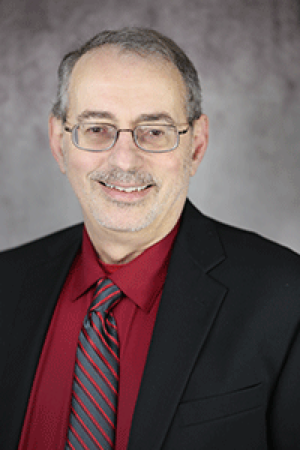 Understanding the Neocortex as a Cohesive and 'Universal' Neurocomputer
Understanding the Neocortex as a Cohesive and 'Universal' Neurocomputer
Anthony S. Maida, Ph.D.
Associate Professor
School of Computing & Informatics
Ray P. Authement College of Sciences
asm6678@louisiana.edu
The brain is most saliently viewed as a bio-computer composed of spiking neurons. We are interested, however, in how the brain enables thought. This can only be understood by taking a multi-scale approach that interlinks several levels of anatomical and physiological description. This presentation will necessarily oversimplify and discuss some of those description levels as they relate to the neocortex of mammals, primates, and humans. One theme will be the scalability of neocortical surface area as its size varies from one square centimeter in a mouse to 2,500 square centimeters in humans. Another theme will involve defining some of the description levels themselves, namely: neurons, mini-columns, cortical areas, and cortical networks, the last of which ultimately captures what we view as cognition.
I argue that the secret to neocortical scalability and near universal learning lies in the unknown functional mechanisms embedded within the neocortical mini-column, a recurrent network which has on the order of 500 neurons divided into 80% excitatory and 20% inhibitory, along with roughly 105 NMDA synapses (contact points between neurons which serve as adaptive memory trace storage sites). The presentation finishes by mentioning some nascent approaches to studying the mini-column computationally.
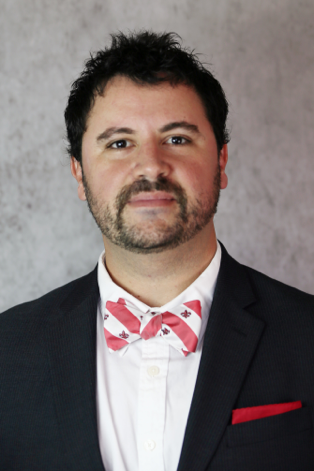 Growing the Entrepreneurial Mindset across Campus: A Multidisciplinary Approach
Growing the Entrepreneurial Mindset across Campus: A Multidisciplinary Approach
Curtis Matherne, Ph.D.
Assistant Professor
Department of Management
B.I. Moody III College of Business Administration
cfm3861@louisiana.edu
This briefing discusses an educational initiative our team in the Moody College of Business is exploring to proliferate the entrepreneurial mindset across all disciplines. Entrepreneurship can sometimes be viewed with disdain, but its underpinnings can be incredibly valuable in nearly every context. A better understanding of those individuals who personify characteristics of successful entrepreneurs can help facilitate value creation throughout the university and beyond. Furthermore, the coordination of these efforts can enable university-wide synergies through the creation of uniquely diverse, high-performing teams of problem solvers and innovators. The immediate hurdles are how to identify and coordinate these students while providing the structure needed to nurture their growth.
 Examining the Link Between Psychological and Physical Health
Examining the Link Between Psychological and Physical Health
Mike McDermott, Ph.D.
Assistant Professor
Department of Psychology
College of Liberal Arts
michael.mcdermott@louisiana.edu
A growing body of evidence demonstrates that poor psychological health is associated with poor physical health and that this relation seems to be reciprocal such that dysfunction in one increases risk for poor functioning in the other. Similarly, emerging research demonstrates that improved psychological or physical health is associated with improvements in the other. However, current understanding of the behavioral, emotional, or physiological mechanisms underlying this mind-body interaction remains limited. This presentation will (1) provide an overview of the relation between psychological and physical health, (2) discuss specific psychological and physical health conditions central to this relation, and (3) briefly describe current work from our lab examining the underlying mechanisms by which these disorders are related.
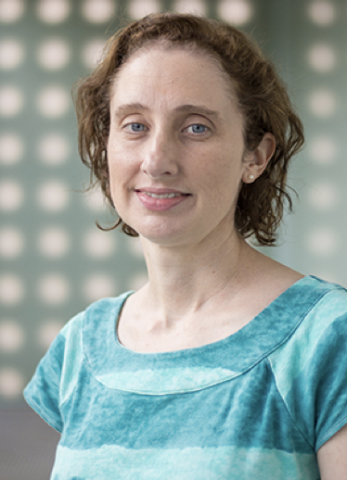 Cognitive Connections at the Hilliard University Art Museum
Cognitive Connections at the Hilliard University Art Museum
Olivia A. Morgan, B.A., M.A.
Educator
Paul and Lulu Hilliard University Art Museum
oam3648@louisiana.edu
The Hilliard University Art Museum is in the early stages of researching and implementing a new program for people with Alzheimer’s disease or dementia and their caregivers. The goal of the program is to provide a community setting in which visitors and their caregivers can observe art together, engage in open-ended discussions, and participate in an art making activity. There are currently over 5 million Americans with Alzheimer’s and this number is predicted to grow to 16 million by 2050. With the population of people with Alzheimer’s and with dementia growing, there is a need for quality programs that connect this population and their caregivers with a larger community and provide positive and stimulating experiences. A small initial study in 2008 of a model program at the Museum of Modern Art in New York found a significant improvement in the mood of both patients and caretakers. The opportunity and need for research in this area is great and the museum is looking for partners on campus to help in designing, implementing, and evaluating its program.
 Desperately Seeking Explanation
Desperately Seeking Explanation
Daniel John Povinelli, Ph.D.
Professor
Department of Biology
Ray P. Authement College of the Sciences
povinelli@louisiana.edu
In every domain of intelligence from temporal and spatial reasoning, to social cognition, to understanding the causal properties of objectsthe human mind constructs “explanations” of the statistical patterns our perceptual senses detect in the world. As expressed in science, this uniquely human mental oddity has, in the blink of an evolutionary eye, cured diseases, harnessed electricity, and extended human lifespans. It has also given us the capacity to control phenomena that can destroy not only ourselves, but most other life on the planet. I propose that the current cultural faith in science (scientism) should be regarded as a mania, and that this mania will continue to inexorably deliver the technical means to inflict maximum harm upon our species and the planet. If true, an urgent, organizing question for the present Community of Interest becomes clear: what are the implications of the broader, unbridled pursuit of the technical means to explain and control the human mind and brain, and are we prepared to accept that we are the leading edge of the enterprise that will deliver such control?
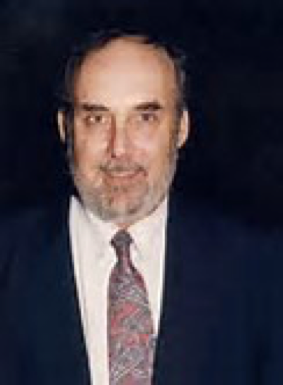 The Complexity of Sports Related Concussion: Research Agenda
The Complexity of Sports Related Concussion: Research Agenda
Anthony P. Salvatore, Ph.D.
Associate Professor
Doris Hawthorne & Harmon Roy-BORSF Endowed Professor
Department of Communicative Disorders
College of Liberal Arts
asalvatore@louisiana.edu
The unresolved questions surrounding the diagnosis, assessment, treatment and prevention of sports related concussion are numerous and challenging. For example, the controversy surrounding the diagnosis is being approached from a variety of research pathways; metabolic markers, genetic markers, behavior markers, and imaging markers. Each of these methods has provided some indicators but more often than not has revealed the complexity involved in pointing to one or a pattern of variables. Behavioral markers to date have been insensitive to the long-term impact of a sports related concussion. The search for metabolic and genetic markers is pursued enthusiastically with the hope of finding an effective, efficient and sensitive marker for the diagnosis and tracking the process of recovery from a concussion. The potential research questions require multidisciplinary and well-funded efforts to make a significant contribution to these problems. The ultimate outcome of such efforts is to ensure the long-term well-being of young athletes academically, socially and economically.
 The Stars in Our Mind: Astrocytes and Brain Health
The Stars in Our Mind: Astrocytes and Brain Health
Karen Müller Smith, Ph.D.
Assistant Professor
Department of Biology
Ray P. Authement College of the Sciences
karen.smith@louisiana.edu
Astrocytes are star shaped support cells of the brain that have a multitude of functions including recycling of neurotransmitters, energy balance within the brain, water and ion balance in the brain, formation and regulation of the blood brain barrier, response to injury, stem cell proliferation, and secretion of factors that promote synapse development and health of the neurons in the brain. Astrocytic glial cells are also important for the development of the nervous system as stem cells, and as guideposts for neuronal axon guidance. Fibroblast Growth Factors (FGFs) and their receptors (FGFRs) are expressed by astrocytes of various morphologies and functions throughout the nervous system. The inactivation of FGFRs in laboratory mice leads to astrocyte dysfunction in neural development, reduced astroglial stem cell proliferation, abnormal GABAergic interneuron development, and disrupted morphology of specialized astrocyte cell types. These disruptions have influences on both behavior and motor coordination, and have implications for disorders such as schizophrenia, depression, and ADHD. We seek to understand the underlying mechanisms for FGFR mediated astrocytic functions. Amongst our projects are studies of the interaction between astrocytes and GABAergic neurons in a co-culture model, studying the behavior of mice lacking FGFRs, studying the role of FGFRs in tanycytes (a specialized type of astrocyte found in the hypothalamus, an area of the brain that is important for hormonal regulation and homeostasis), and studying the role of FGFRs in Bergmann glia of the cerebellum.
 HIV and the Brain in the Era of HAART
HIV and the Brain in the Era of HAART
Francois Villinger, Ph.D., DVM
Director, New Iberia Research Center
University of Louisiana at Lafayette
Untreated HIV infection often leads to late stage CNS inflammation at the AIDS stage culminating in HIV encephalitis and opportunistic infection of the CNS. The advent of combined highly active antiretroviral therapy (HAART) has virtually eliminated HIV-E in developed countries. However, HAART does not eradicate HIV, nor does it fully contain the chronic inflammation caused by HIV infection resulting in accelerated aging. For the CNS, this low grade chronic activation results in a syndrome called HIV associated neurocognitive disorders (HAND), associated with signs of local infiltration of activated macrophages and monocytes and activated microglia and early loss of dendritic processes and neuronal cells. These histological findings are associated with a whole spectrum of early to advanced impairment of neurocognitive functions leading to AIDS dementia, a looming threat for the 1.4 million patients currently infected with HIV in the US. Specific issues of HAND are the difficulties for several classes of antiretroviral drugs to cross the blood brain barrier, the containment of antiviral defenses and the limited tolerance of the CNS for inflammatory processes. While there were only few partially validated models for the study of HIV-encephalitis, the insidious and slowly progressive nature of HAND has been a far bigger challenge to study, in order to define biomarkers, profiles of neurocognitive tests and potential therapies.

